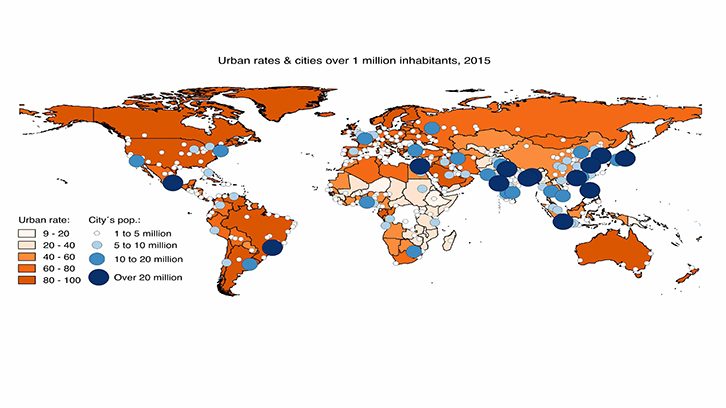Urbanization without development

Today, we live in an urban world: while 50 years ago about 30% of the world's population lived in urban areas, today the figure is around 55%, with more than 4 billion people living in urban areas. Globally, and during the last decades, urbanization has been really accelerated, especially in developing countries. With this, cities have not stopped growing: in 1975 there were 13 mega-cities (i.e., with more than 10 million inhabitants each), one of them with more than 20 million, Tokyo. Today there are at least 32 mega-cities. Of these, 26 are in developing countries, 9 of them already with more than 20 million inhabitants each. Should we worry about this accelerated urbanization and strong growth of cities?
In their article recently published in the Journal of Development Studies, David Castells-Quintana of the UAB, together with Hugh Wenban-Smith, have studied the evolution of urbanization and the size of cities around the world during the last 4 decades. Thus, they have analyzed the extent to which recent urbanization is related to economic development or not. The detailed analysis of the data carried out by Castells-Quintana and Wenban-Smith in their article shows that for many developing countries, especially the poorest, we can talk about urbanization without development. An urbanization that seems explained more by the pressure that the high population growth rates still exert in those countries.
Traditionally, urbanization had involved a structural transformation, associated with industrialization and economic growth. This was the experience of almost all European countries. However, the recent urbanization of many developing countries is the result of increasing demographic pressure in rural environments with poor and deteriorating living conditions. The result is an uncontrolled growth of cities with low levels of productivity and quality of life. Consequently, today 1 in 3 urban residents lives in precarious urban suburbs; the cities do not stop growing but the quality of life in most of them does not.
In their article, the authors provide empirical evidence of these urbanization processes without economic growth and development. Likewise, the authors explain this phenomenon using a simple theoretical model capable of predicting the evolution of the main cities of the world from the population growth of their countries. With this, the article emphasizes the challenge that the demographic explosion that many developing countries still experience and that today translates into an uncontrolled urbanization that puts the prospects for development and better living conditions at risk.
Universitat Autònoma de Barcelona
References
Hugh Wenban-Smith, David-Castells Quintana (2019). Population Dynamics, Urbanisation without Growth, and the Rise of Megacities. The Journal of Development Studies. https://doi.org/10.1080/00220388.2019.1702160

